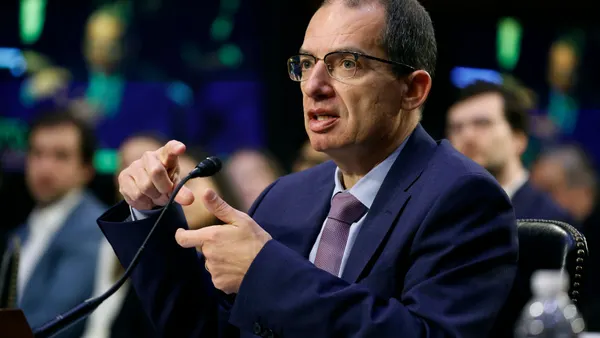PDUFA Update
FDA Requests $87.4 million increase The FDA has put before Congress its recommendations for reauthorizing the Prescription Drug User Fee program (PDUFA). If adopted, PDUFA IV — the fourth reauthorization since the program began almost 15 years ago — would significantly broaden and upgrade the agency’s drug safety program, increase resources for review of television drug advertising, and facilitate more efficient development of safe and effective new medications for the American public. The FDA is asking for $392.8 million in annual user fee collections, an $87.4 million increase over the current baseline. Program enhancements: $37.9 million $29.3 million would provide a major boost for FDA activities to ensure the safety of medications after they are on the market, including hiring an additional 82 employees to perform postmarket safety work. $4.6 million for 20 employees to help expand FDA’s implementation of guidance for FDA’s reviewers and develop guidelines for clinical-trial designs. $4 million to improve the information technology to move the agency toward an all-electronic environment. In addition, the FDA is proprosing a separate new user fee program to collect fees from companies that seek FDA advisory reviews of their DTC TV ads. The FDA anticipates that these fees will be $6.2 million in the first year and support 27 additional staff to carry out this review function. Financial baseline: $49.4 million $17.7 million to adjust the base amount for inflation and support increases in salaries and benefits. $11.7 million to ensure that the fees cover a share of increased rents and the costs of the agency’s new facility. $20 million in additional fees to cover significant increases in the FDA’s drug review workload that were incurred but not compensated for under PDUFA III, and are expected to continue. Source: Food and Drug Administration, Silver Spring, Md. Predictions for 2007 Major Reforms Predicted Democrats will enact major reforms that will dramatically alter the current prescription drug landscape, including allowing the government to negotiate prices for Medicare, the elimination of authorized generics, and the introduction of importation of drugs into the United States. AstraZeneca/AtheroGenics’ AGI-1067 will receive approval for coronary heart disease and the product will grow to blockbuster status. Genentech/Roche’s Avastin will be indicated for a variety of new cancers. Sanofi-Aventis’ Acomplia, a first-in-class cannabinoid receptor antagonist used to treat obesity, diabetes, hypertension, and dyslipidemia will be reimbursed. Biosimilar Epogen will receive EU approval. Source: Decision Resources, New York. Industry Reputation Gap Widens Between Pharma and the Public A disconnect is contributing to the decline in the industry’s reputation and causing the industry’s messages about its value to society to fail in the court of public opinion. There are differences between the public’s view of the industry and the industry’s self perception, according to a PricewaterhouseCoopers report. Key findings: n 74% of consumers underestimate the average financial investment required to research and develop a new drug by more than 50%. n Consumers are split between believing that pharmaceutical companies consider important unmet medical needs when deciding to develop a new drug (55%) instead of choosing to develop me-too and lifestyle drugs with the greatest sales potential (45%). This compares with 71% of industry stakeholders and 91% of pharmaceutical executives, respectively, who say health needs are a top priority for pharmaceutical companies. 94% of consumers and 81% of industry stakeholders said drug companies are too aggressive in promoting unapproved uses of their product; 47% of pharmaceutical company executives agreed. 62% of stakeholders agreed that drug companies often manipulate or suppress negative clinical-trial results to maximize sales. Four out of five pharmaceutical executives disagreed. 73% of stakeholders agreed drug companies spend too much money and effort attempting to prevent generic drugs from competing with their branded products. Consumers strongly agreed that drug companies should be working with generic drug manufacturers to make generics available upon expiration of their branded drug’s patent. 78% of consumers will consider a drug company’s reputation when choosing which product to take. Only one out of three pharmaceutical executives, however, thought reputation was a factor. Source: PricewaterhouseCoopers, New York. February 2007 PharmaVOICE UpFront







